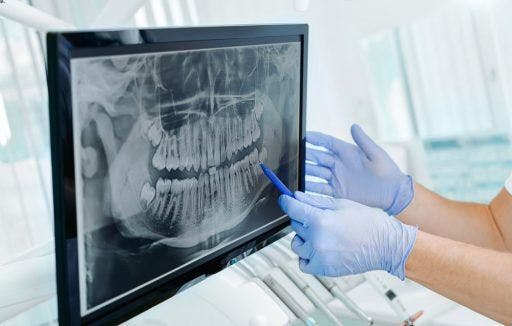Did you know orthodontics is the oldest dental speciality? Since its inception, it “has been instrumental in enhancing smiles and improving oral functionality for millions,” notes the American Association of Orthodontists (AAO). Read on to learn how orthodontic treatments can fix crooked and crowded teeth, faulty bites, and other oral health issues.
Why you might need orthodontic treatment
Are you experiencing chewing or speaking difficulties? Or perhaps you’re looking to improve the appearance of your smile.
Orthodontics is the field of dentistry dedicated to correcting teeth and jaw irregularities and improving their function. Orthodontic treatments involve “straightening teeth and correcting misaligned bites through the use of orthodontic appliances,” explains the Australian Society of Orthodontists (ASO).
Ultimately, orthodontics “ensures optimal alignment of teeth and jaws, enhancing the symmetry of one’s facial structure,” adds the AAO. “The journey with orthodontics is transformative, both aesthetically and functionally.”
Addressing teeth misalignments and bites can help you avoid these problems:
- Tooth decay: Crowded and overlapping teeth make it more difficult to clean between them, leading to plaque buildup and cavities.
- Gum disease: Plaque buildup can also affect your gums, causing various diseases.
- Excessive wear: Misaligned teeth can cause enamel erosion, exposing your tooth structure and leading to further complications.
- Oral injuries: Sharp edges, protruding teeth, and misaligned bites can damage your gums and other oral tissues, especially during contact sports or accidents.
- Eating difficulties: Bad bites can make chewing and swallowing challenging. Even closing your mouth properly can become challenging.
- Low self-confidence: Dental issues and speaking difficulties may cause you to avoid social interactions and smiling in public.
- Unnecessary expenses: Neglecting treatment today can lead to more severe problems, requiring costly solutions in the future. Consider orthodontics an investment with lifelong benefits.
Examples of orthodontic problems
Here are common issues orthodontic treatment can address:
- Crowded teeth: Lack of space in your jaws causes teeth to overlap and protrude at abnormal angles.
- Teeth gaps: Spaces between teeth can cause wobbling or breakage, and food particles can easily get trapped.
- Overjet: In an overjet, your upper front teeth protrude forward, creating a space between the rows.
- Crossbite: You have a crossbite if the edges of your teeth aren’t meeting where they should.
- Open bite: In this misalignment, a gap remains between your upper and lower teeth when your mouth is closed.
- Underbite: In a typical bite, the upper front teeth extend slightly beyond the lower front teeth. But if you have an underbite, your lower teeth appear to close in on your upper teeth
- Midline shift: The dental midline is an imaginary line running down the middle of your upper and lower teeth. If the line doesn’t fall squarely between your upper and lower central incisors, you have a misalignment.
Take this online smile assessment to find out if you have any of these issues.
Stages of orthodontic treatment
Though every case is unique, most patients undergo a similar step-by-step process. You start by planning the therapy with your dentist. Then, you move to the active phase of wearing your chosen appliance for a prescribed period. Lastly, you transition to the retention phase to keep your smile as bright as possible for many years. Ready to explore each stage?
The planning phase

A “dental treatment should be preceded by in-person examination, diagnosis, and treatment planning,” emphasises the Australian Dental Association (ADA). Orthodontics is much like any medical procedure. Once you get to the clinic, you’ll likely answer a questionnaire and inform the dentist about your chief complaint.
Since dentists have varying solutions, depending on your circumstance, you will need to communicate your needs and preferences. Try to answer the following:
- What don’t you like about your teeth right now?
- What are the types of orthodontic treatment that appeal to you?
- What results do you expect to see after the treatment?
Be straightforward. If you’ve set your eyes on invisible aligners instead of traditional braces, tell your treating dentist directly. This way, they can offer appropriate recommendations and guide you towards the right decisions.
Evaluating your dental health.

Before your dentist can finalise your treatment plan, you’ll undergo various assessments to determine your dental, oral, and overall physical health. You’ll need to schedule an appointment (that can sometimes involve separate visits) to go through the following required steps:
- Extraoral examination – The dentist will analyse your face and profile and take photos for documentation.
- Intraoral examination – Your dentist will check the different parts of your mouth, including the soft tissues (tongue and gums).
- General dental checkup – Your dentist will then examine the health of your teeth, check your bite, and identify issues like decay, plaque, and malocclusion (teeth misalignments).
- Panoramic dental X-ray – This two-dimensional view of your jaws will reveal the position of your teeth.
- Intraoral scans – This innovative imaging tool will allow your dentist to take a closer look at each tooth.
Previously, planning also included the impression stage, which involves creating a plaster replica of your teeth. However, these models are rarely accurate, and many patients find the process uncomfortable. These days, dentists rely on intraoral scans to get a 3D view of your teeth. They use this digital tool to magnify details, take measurements, and analyse the bite force of your teeth.
Creating a personalised treatment plan.
After all these assessments, your dentist will craft a treatment plan for your case. They will go through all your results and decide if your desired orthodontic solution suits your circumstances. Then, they will inform you of your treatment duration, some protocols, and other necessary information for your dental health.
If you’ve decided on ClearCorrect aligners for your therapy, your orthodontist can prepare all these with ClearPilot. This digital platform offers intuitive control and flexibility in treatment planning. With it, you and your dentist can visualise your progress and determine if your teeth are moving into their proper positions.
The active phase

Now, it’s time to put the plan into action! “This is where your teeth start to move as a result of the gentle pressure,” explains the Australian Society of Orthodontists (ASO). “You might feel a bit of pain, tenderness, or discomfort during this stage – but it will pass.”
Depending on your desired result, you will go through a number of aligner sets during your treatment. Your dentist will determine the intervals between each and how often you must schedule checkups. For example, you might need to wear your initial aligners for two weeks before transitioning to the second set. Then, after two months, you can move to set number three.
Don’t be surprised if your plan requires numerous aligner sets to fix your misalignment. Thankfully, checkups for aligner patients are quicker; five to 10 minutes might be all you need. Plus, you’ll have the option to use remote monitoring technology to minimise face-to-face appointments.
Your dentist can also recommend elastics, chewies, and engagers to move your teeth and improve your bite. The ASO explains: These “ensure the upper and lower dental arches are aligned and that your teeth bite together harmoniously.” Towards the end of your therapy, your dentist will decide if you need to extend your aligner use or graduate to the next phase.
The retention phase

Hooray! You’ve made it to the final stage. But there’s still work to do. “A key part of looking after your teeth post-treatment is to wear retainers to help keep your teeth in their corrected positions,” explains the ASO.
These orthodontic appliances help prevent a teeth relapse and ensure your investment won’t go to waste. Your dentist will prescribe the type of retainer you need and how long you have to wear them. But in some cases, you have to keep them forever. Additionally, you still need to schedule periodic checkups after aligner or retainer use to keep your teeth in their ideal shape and alignment.
Orthodontic treatment FAQs
Are you ready to say “yes!” to straight teeth? Making this commitment can be a life-changing experience for the better. Here are answers to some common questions to ease your journey.
How long does orthodontic treatment take?
“This is dependent on the type of treatment you require and the movements your teeth need to complete,” notes the ASO. The timeframe also depends on your compliance with protocols and cooperation with your dentist. For some, the entire process ends in six months. For others, it can last for years.
Who offers orthodontic treatments?
Treatment should be carried out by a registered orthodontist. They “have the skills and expertise to correctly diagnose orthodontic problems, assess and monitor your tooth movements, and safeguard the health of your teeth,” explains the ASO.
When should you get orthodontic treatment?
Ideally, orthodontic treatment is best during early adolescence, just as most permanent teeth emerge. Significant growth occurs during this period, making teeth and jaw adjustments more effective. However, adults can and should still seek treatment. Age should not discourage you from straightening your teeth and fixing your bite.
Do orthodontic treatments hurt?
Orthodontic appliances may cause discomfort, especially at first use or when adjusted. This discomfort typically subsides after a few days, allowing you to eat and speak normally. Among orthodontic options, aligners like ClearCorrect are known for their comfort due to advanced technology and fewer adjustments.
Perfecting your smile is a life-long commitment. After undergoing orthodontic treatment, your next task is maintaining excellent oral hygiene. Persistence is key! Brush properly, floss regularly, and always seek advice from your dentist. It won’t be a walk in the park, but everything will be worth it when you see your pearly whites in the mirror.
References:
Direct to consumer and do it yourself dentistry. (2022). Australian Dental Association.
Gao, M., Yan, X., Zhao, R., Shan, Y., Chen, Y., Fan, J., Long, H., & Lai, W. (2020). Comparison of pain perception, anxiety, and impacts on oral health-related quality of life between patients receiving clear aligners and fixed appliances during the initial stage of orthodontic treatment. European Journal of Orthodontics, 43(3), 353–359.
Qabool, H., Sukhia, R. H., & Fida, M. (2020). Assessment of cooperation and compliance in adult patients at three stages of orthodontic treatment at a tertiary care hospital: A cross-sectional study. International Orthodontics, 18(4), 794–800.



